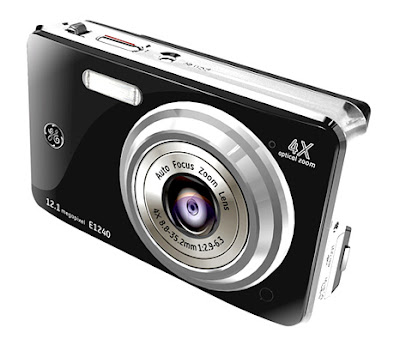Ok so we’re itching to get our hands dirty with the real thing. So let’s rush thru this techie part that I promised.
How are digital photographs ‘formed’?
The camera housing (a fancy name for the body of the cam) consists of a series of lenses among other things. They are in those spout-like things that peep out of the cam the moment you switch it on. As you must have guessed, light enters the camera system through these lenses.
Now, when I say ‘light’, don’t imagine a ray of luminance. ‘Light’ refers to the image of whatever is being captured on camera.
So this light (in other words, the visual details of the image to be captured) passes through the lens arrangement, and falls on a screen of sorts. (You may equate this screen to the retina of the human eye. In fact, the entire camera can be equated to the human eye system. Think about it!)
This screen is a photo sensor – which means it can sense light (Duh!) – and has a series of dots (pixels). The sensor could be one of two types in a digital camera:
. CMOS (Complementary Metal Oxide Semiconductor)
. CCD (Charge Coupled Device)
CCD sensors offer very good image quality, but are very expensive. CMOS sensors on the other hand are not as good as CCDs with respect to image quality, but they are the reason for the fall in digicam prices over the years - they are much cheaper to manufacture!
Back to the topic. Remember the light we spoke about? As it falls on this sensor screen, the pixels get to work. Each pixel studies the bit of light that falls on it, and converts that information into electric charges. This two-dimensional array of charge-information is conveyed to the processor in the camera, which converts the information to a digital format. That is, the charge info of each pixel is converted to a corresponding series of 0’s and 1’s. And all the series of all the pixels are stored in the memory card in a file format supported by the camera (good old jpg for instance).
So that is how digital images are formed in a digital camera. May not have been much of a value add, but if you understand this, you will understand the working of ISO settings later when we get to it.
The other topic to be addressed in this edition is the reason why SLR’s are what they are – Single Lens Reflex.
Technology wise SLRs are very similar to any other camera but for one major difference.
They are honest.
Seriously.
These Point-n-Shoots and Prosumer cameras lie through their teeth.
The insider info is this: In these ‘cheating’ cameras, there are two paths for light:
. One for the light that you see on the camera’s viewfinder (LCD screen on the camera or the small electronic viewfinder where you see the image on the camera before clicking)
. Another separate path for the light that actually falls on the sensor screen!
So what this means is that WYSI-so-not-WYG! They are very similar, but they actually aren’t the same. The odds are that you may not have noticed this in regular usage of the cameras. But it’s happening alright. Every time you click a pic, those blasted PnS’s and Prosumers snigger heartily, and call you a loser. (In all probability, that’s the sound you hear when you click).
If you want to test this, keenly observe the edges of the image you see in the camera’s viewfinder. Then click the picture without shaking. Now transfer the image to a computer and observe the edges in the picture. Voila! The proof of the cheating lies in the seeing.
But good ol’ SLRs aint so!
There is only a single path of light inside an SLR camera housing. The light that comes in through this path falls on a reflex mirror that is at an angle to the path of light. Now, a part of the light is sent to the viewfinder (through a prism) for your preview, while the rest goes to the sensor. So WYSI-really-WIG!
An artist’s (my) rendition of the above scene would look like this:
In principle this is the only difference between SLR cameras and other lesser mortals. But it so happens that camera makers put in a lot of other great things in an SLR. Like very powerful processors and the works. (Their logic is right. Only someone who hates even the minor cheating done by the other cameras would go for an SLR. And since he is such a picky person, one might as well load the cam with a lot of goodies and milk every penny out of him; he won’t mind. In fact, he will gloat about it to his friends).
Practically, some differences one would find between SLRs and other cameras are:
| SLRs | Lesser Mortals |
| Extremely fast operation – click at the press of the button | Yawwwnnnn |
| Goes into your backpack | Goes into your back pocket |
| Very expensive | Priced much lower than SLRs |
| When you buy an SLR, you decide on which cam to buy, which lenses to buy, which filters to buy and so on (though standard packages are also available at shops). | You just decide which cam to buy and get the box from the shop. |
| Above all: Awesssssssome picture quality | Pic quality depends a lot on ur luck and astrology predictions for the day |
This is not an exhaustive list; just hints at the major differences.
So that’s some gyan to chew until my next, which will introduce you to the world of photography jargon.
Keep clicking..






